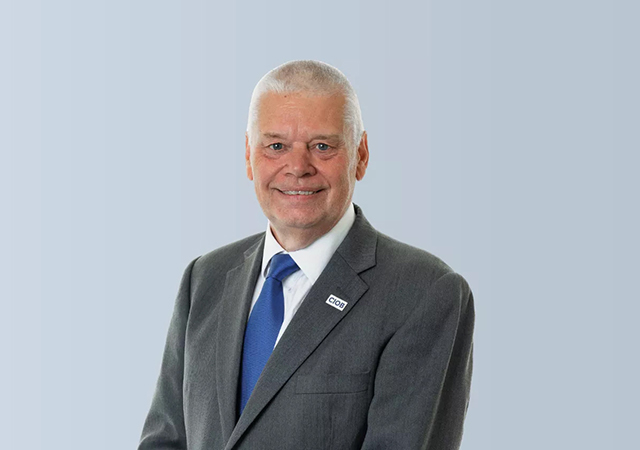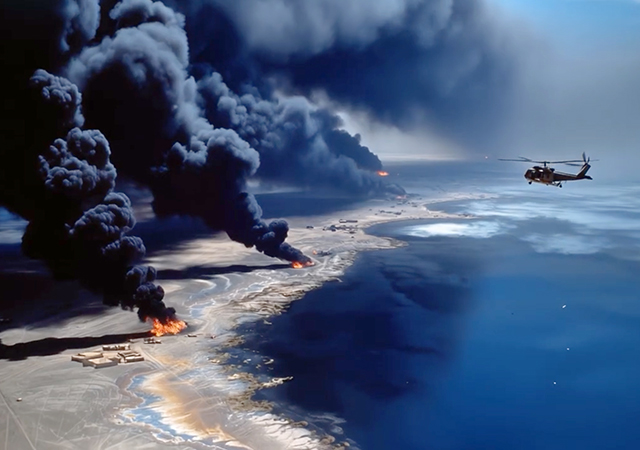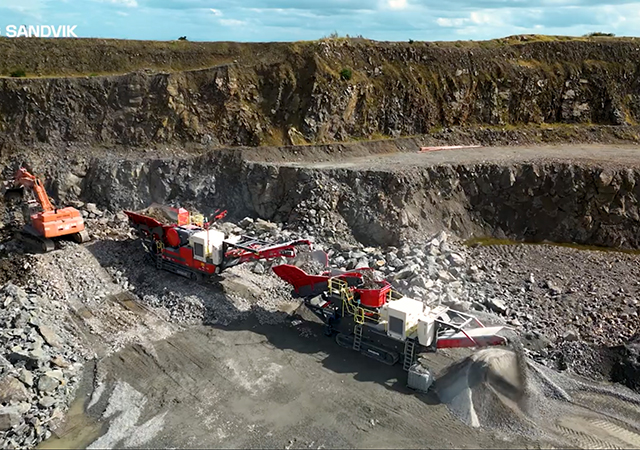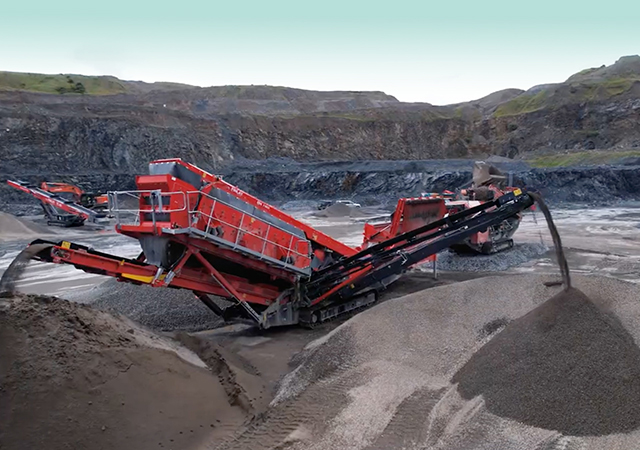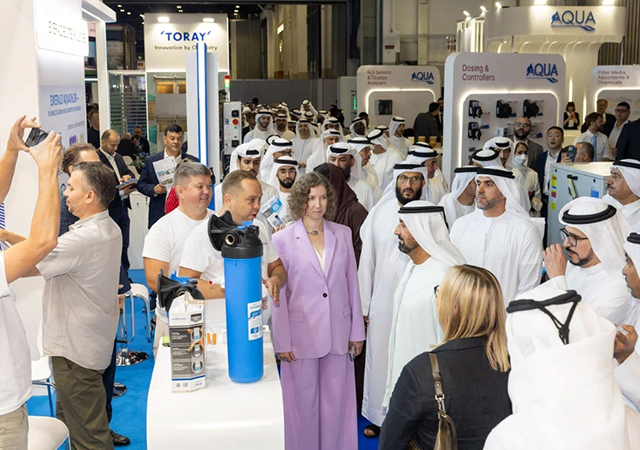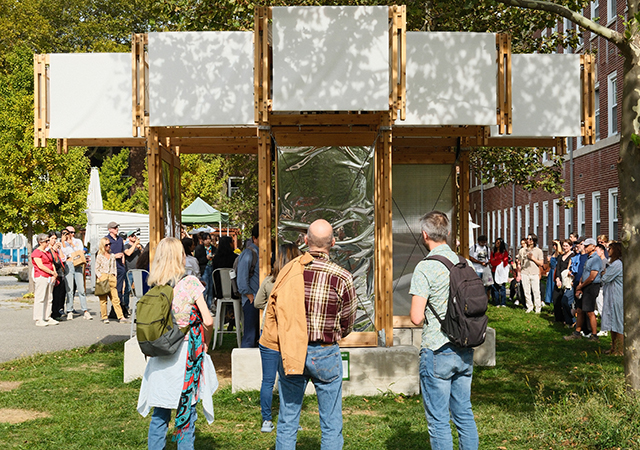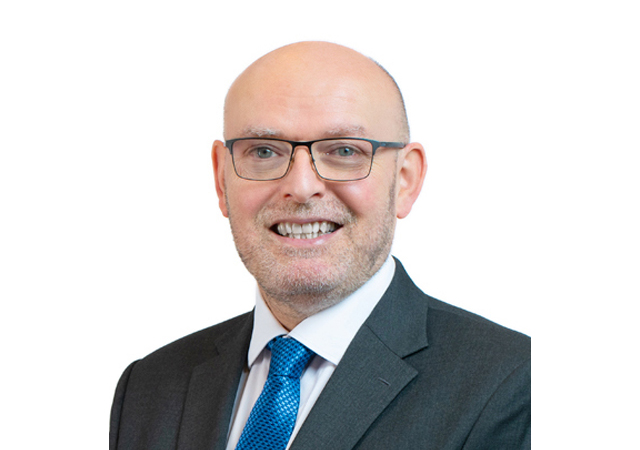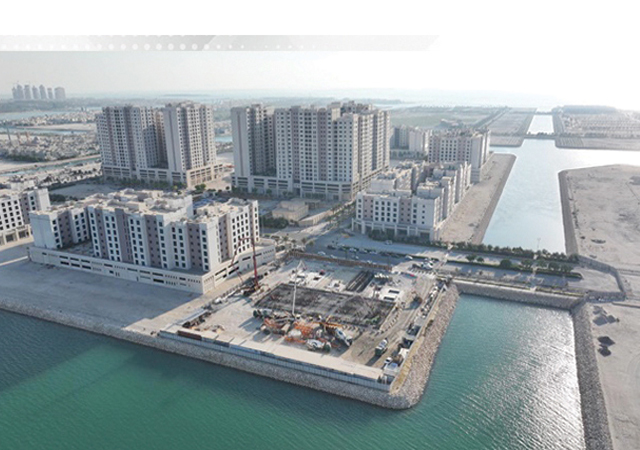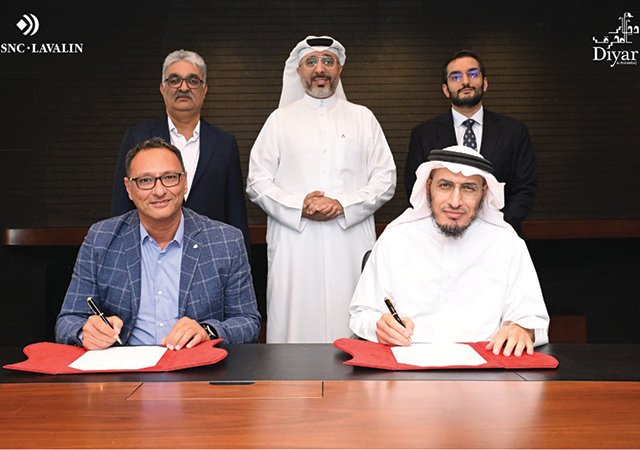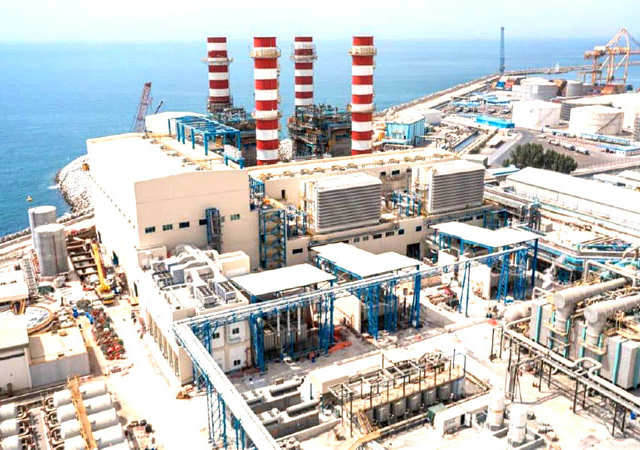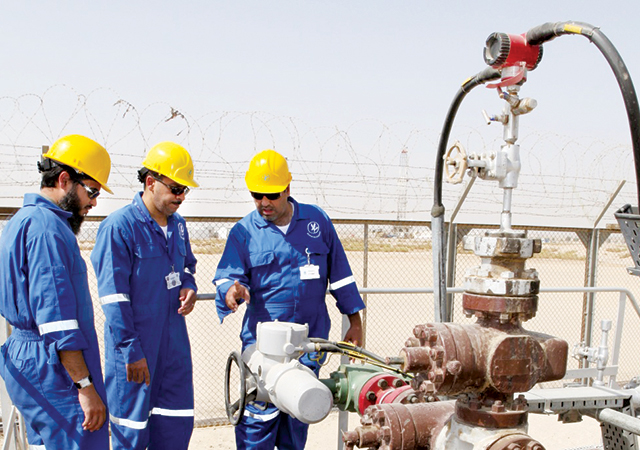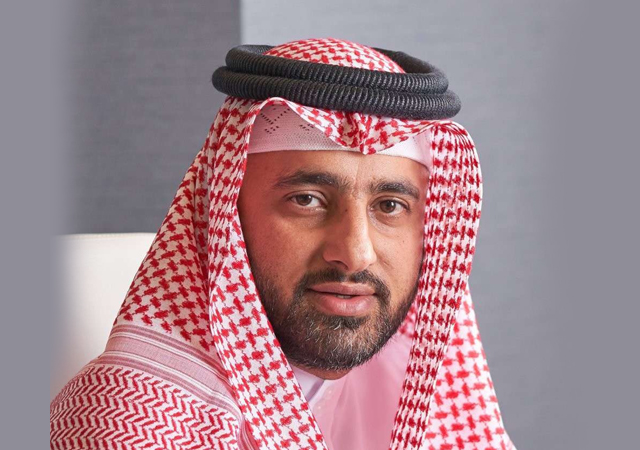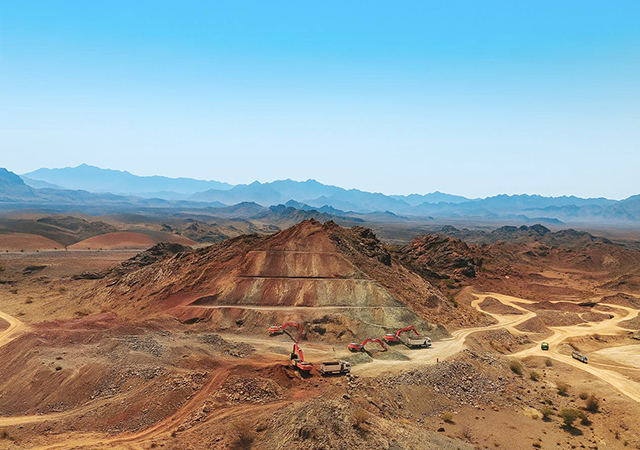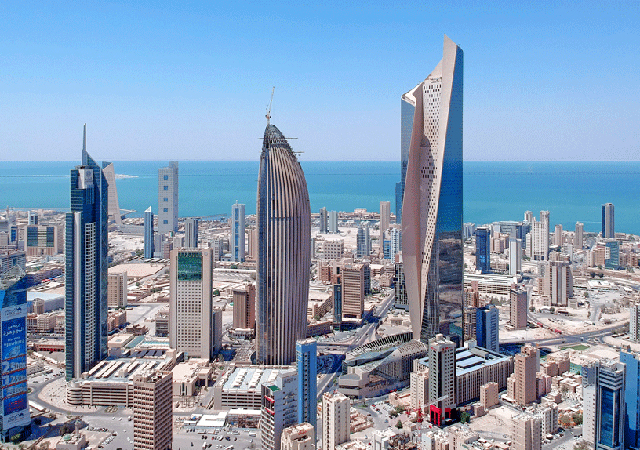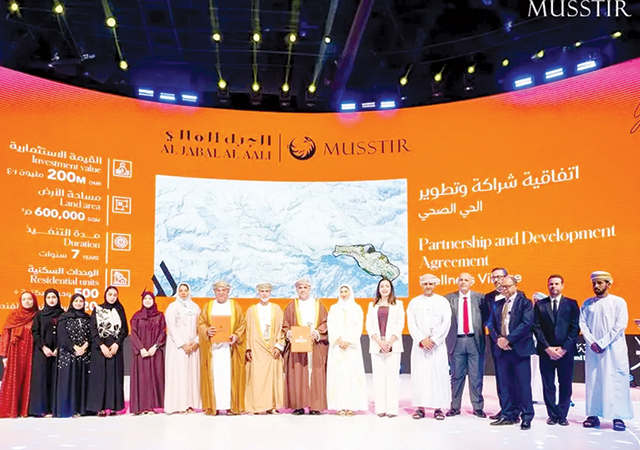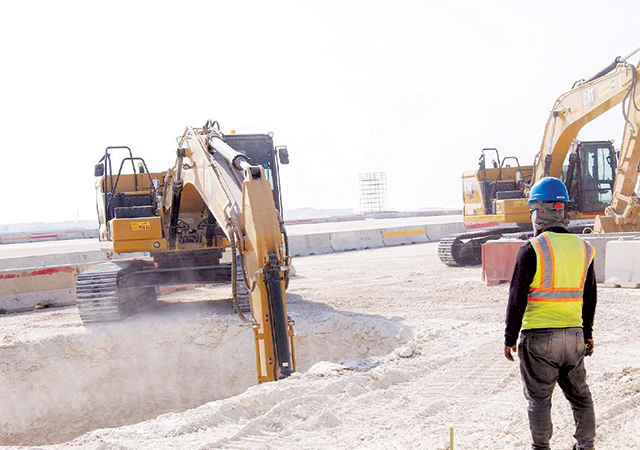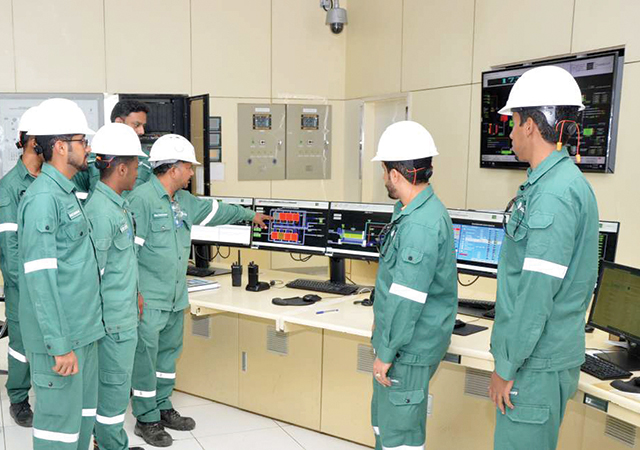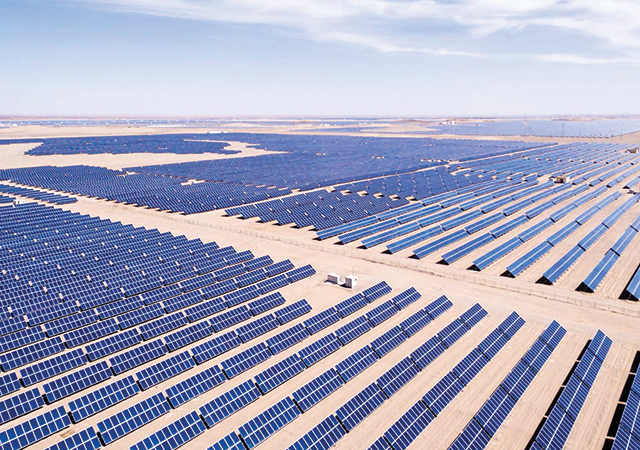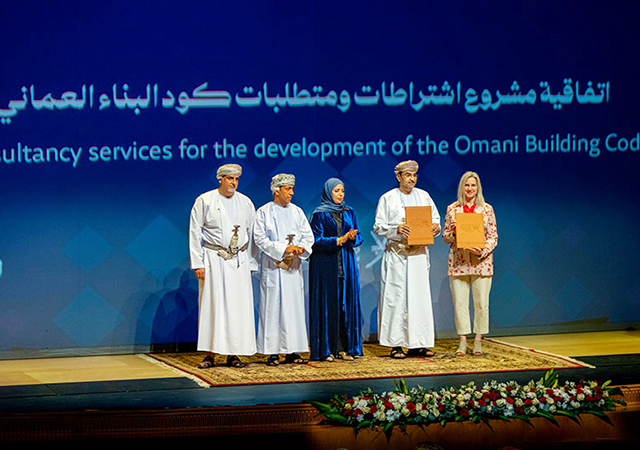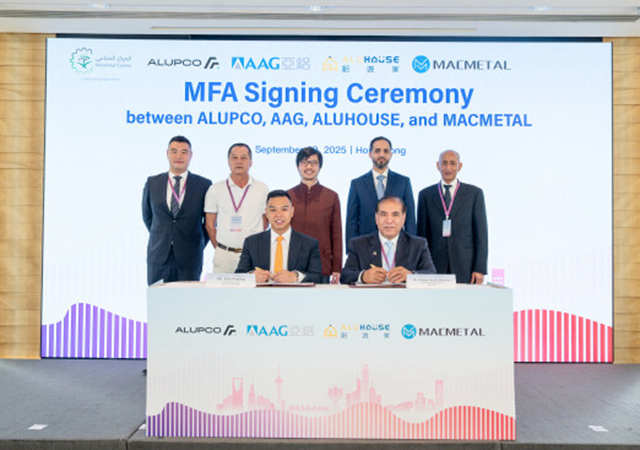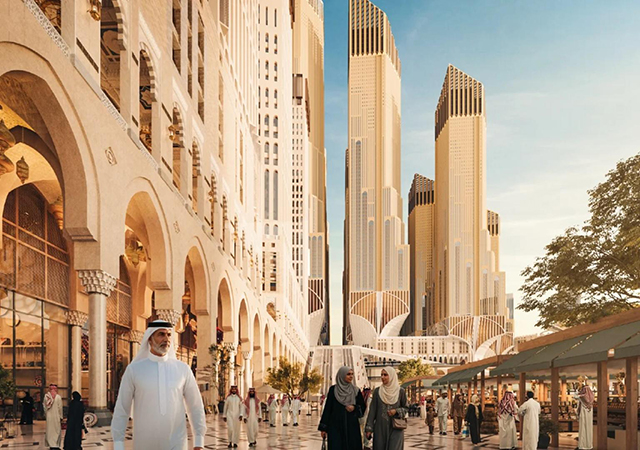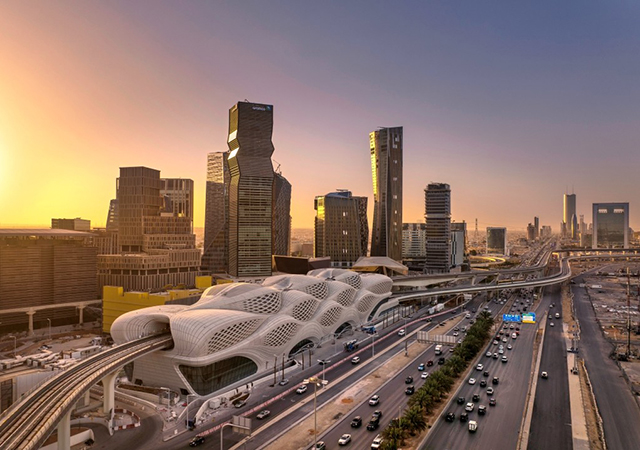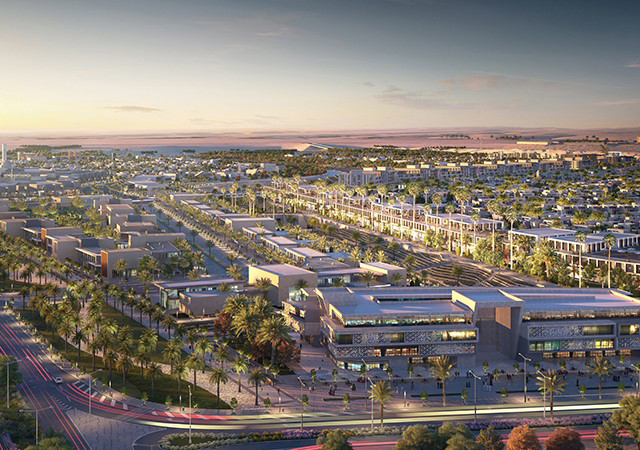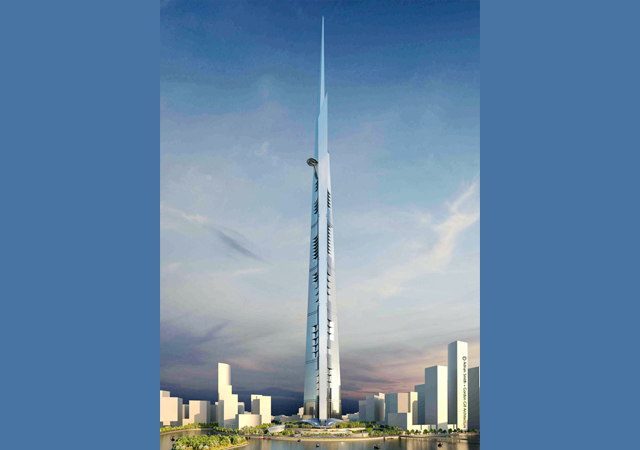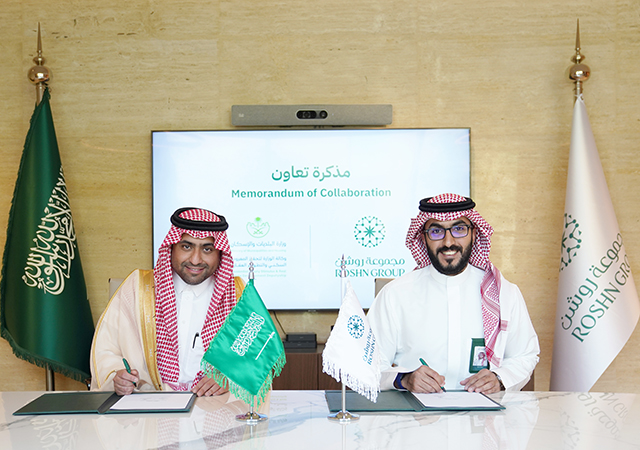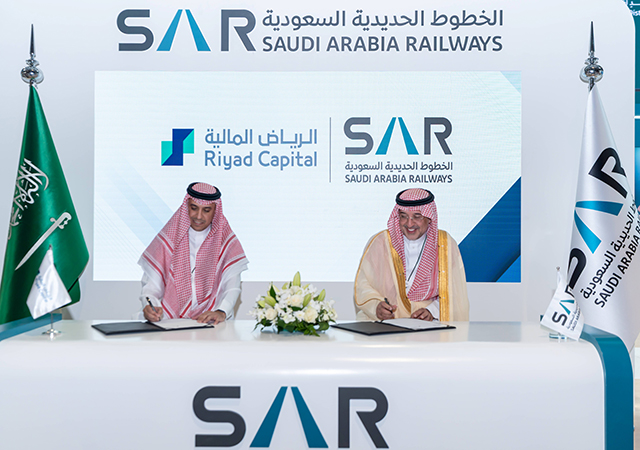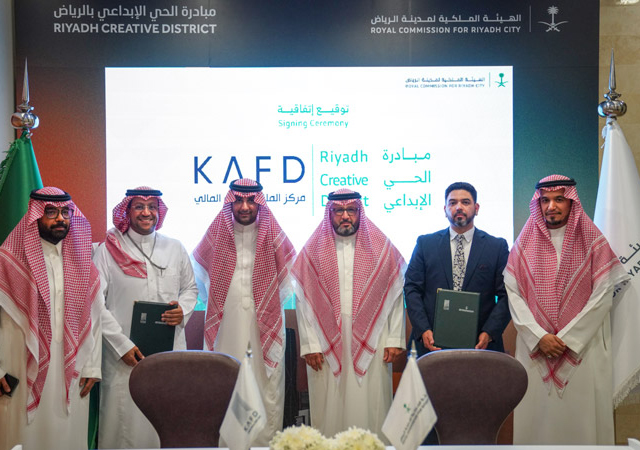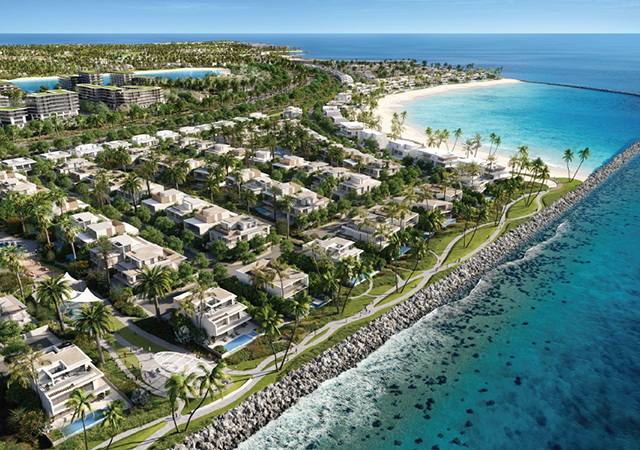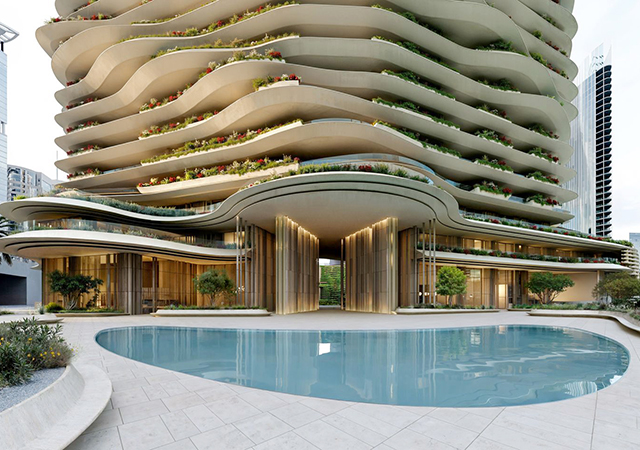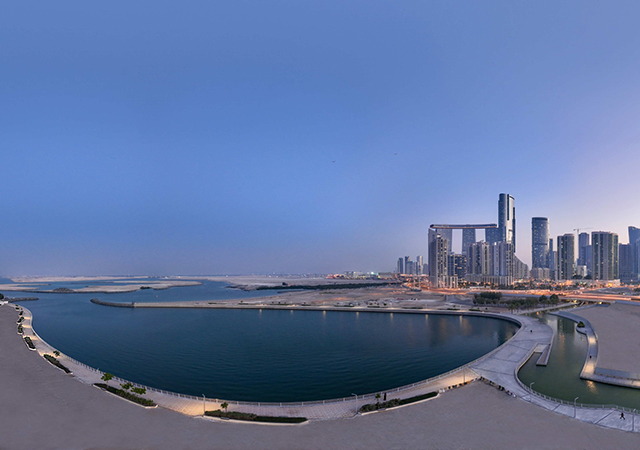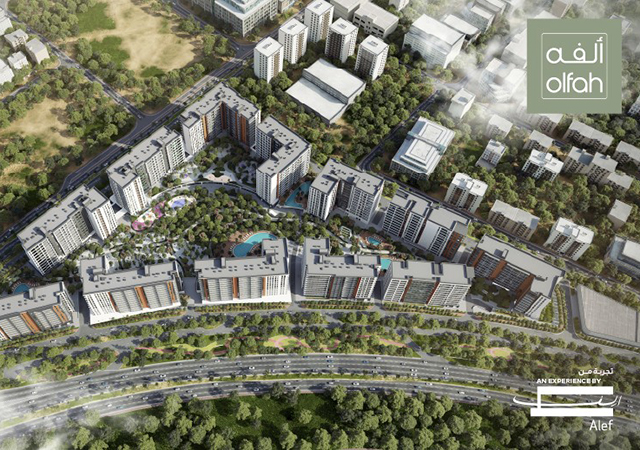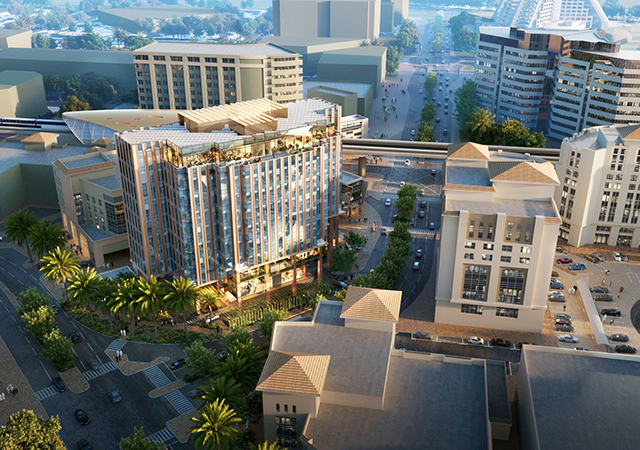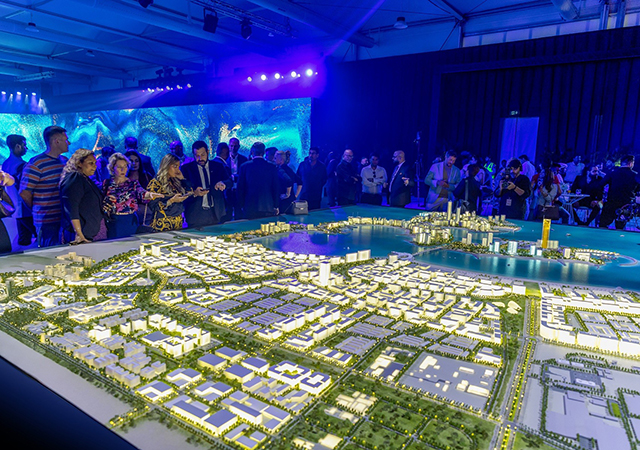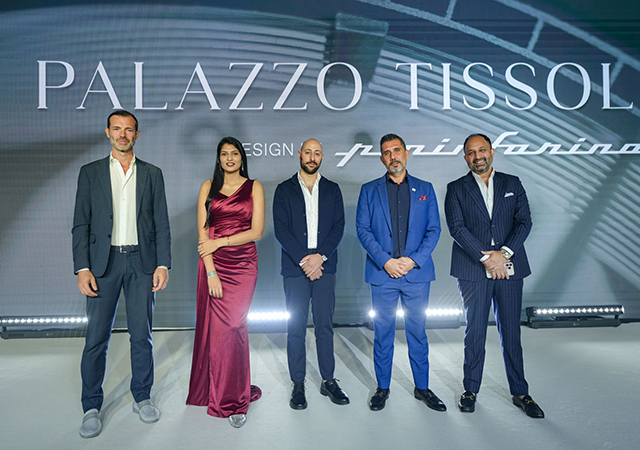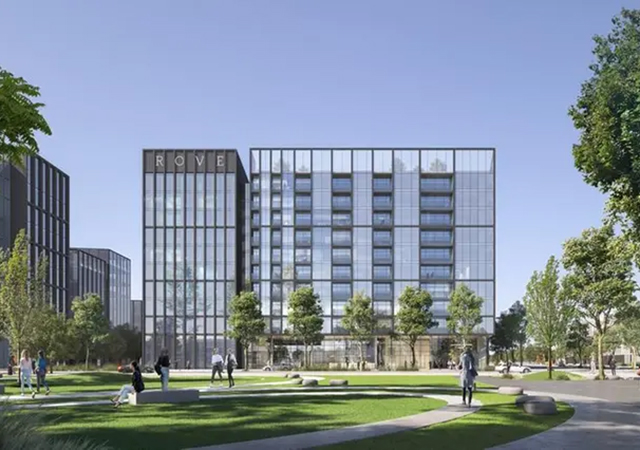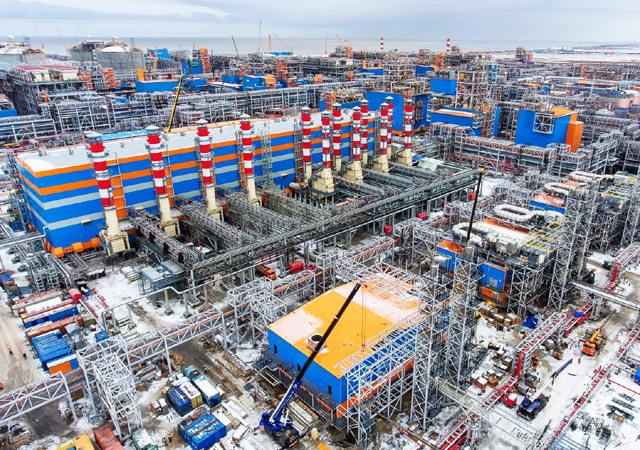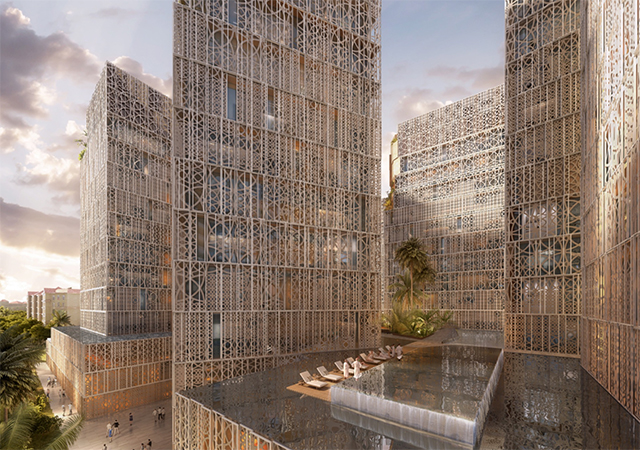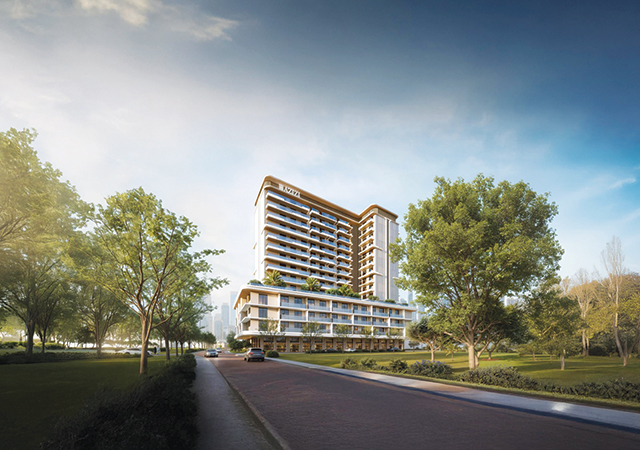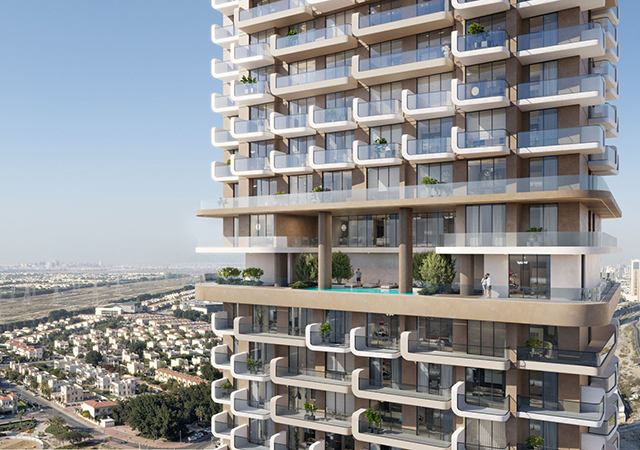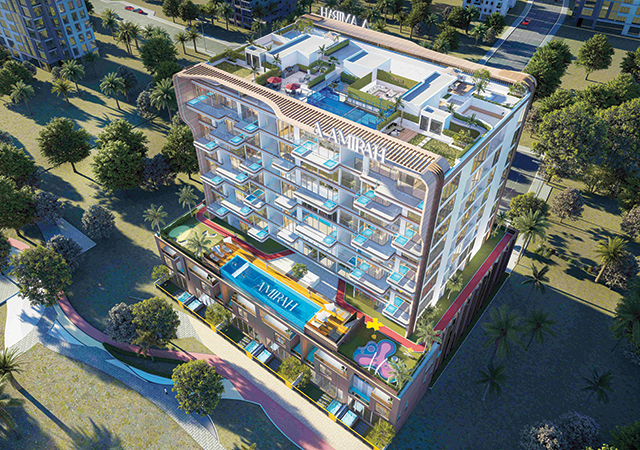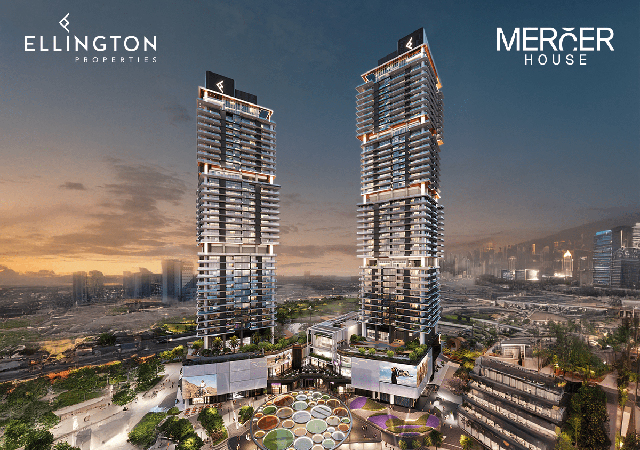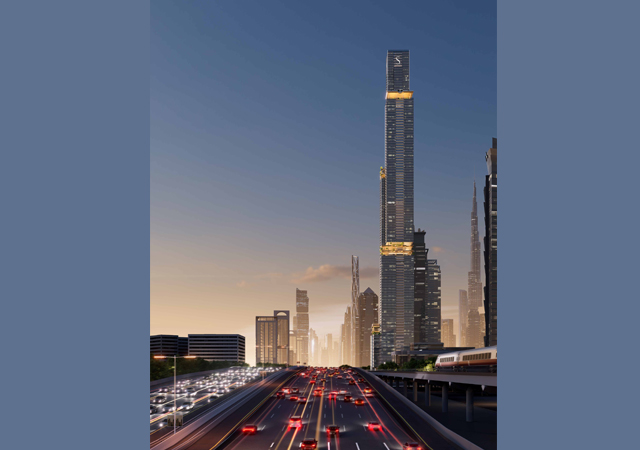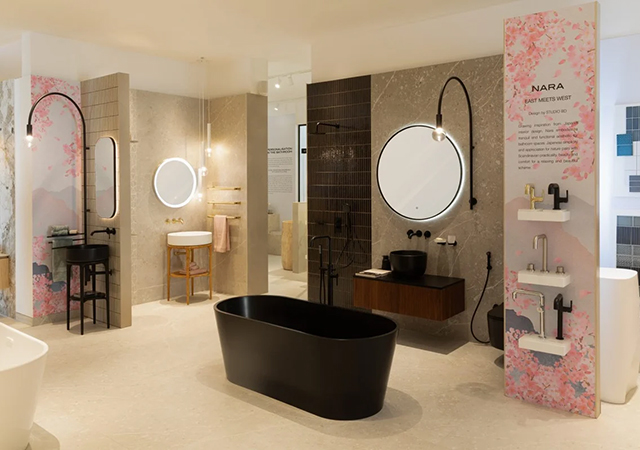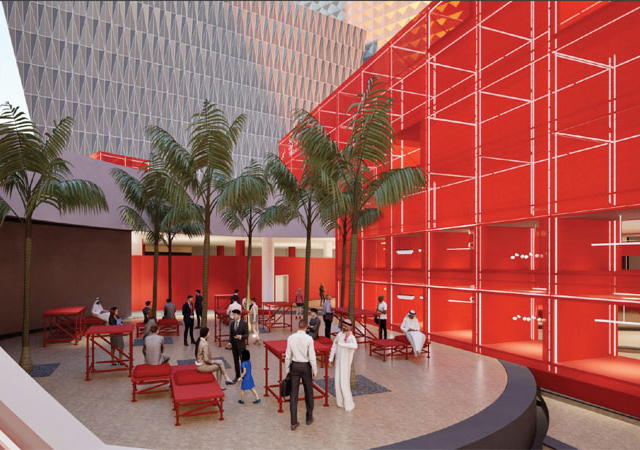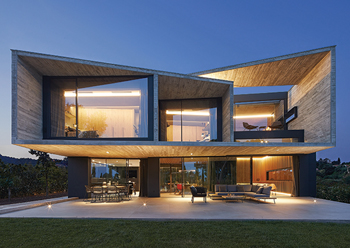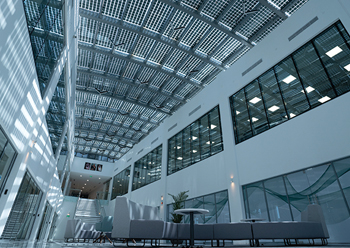
 The photovoltaic skylight above the atrium at NESR Oilfield Research & Innovation Centre.
The photovoltaic skylight above the atrium at NESR Oilfield Research & Innovation Centre.
The colourful glass fins that adorn the façade of Dubai Electricity and Water Authority’s (Dewa) new Research and Development Centre and the vaulting skylight of the NESR Oilfield Research & Innovation (Nori) Centre in Saudi Arabia serve much more than an aesthetic purpose. These building integrated photovoltaics (BIPV) solutions generate valuable solar energy to power the state-of-the-art buildings they adorn.
The new Nori Centre in Dhahran Techno Valley, which was inaugurated at the end of February, features a BIPV system comprising a photovoltaic skylight and a photovoltaic carport provided by Onyx Solar, which is considered to be the world’s leading manufacturer of transparent photovoltaic (PV) glass.
The new centre belongs to National Energy Services Reunited Corp (NESR), an international, industry-leading provider of integrated energy services in the Middle East and North Africa (Mena) region. Located in the heart of Saudi Arabia’s industrial research, technology and academic hub, the centre will enhance NESR’s ability to drive energy sector research and innovation across the region.
The BIPV system, which covers a total area of 752 sq m, is expected to generate 5,915,451 kWh of solar energy in 35 years, according to Onyx Solar.
 |
|
The four facades of the Dewa R&D Centre sport amorphous silicon PV glass with a high transparency degree and in six different colours. |
The impressive photovoltaic skylight above the atrium of the building is made of 180 trapezoidal-shaped monocrystalline silicon PV glass panels.
Elaborating on the installation, Onyx Solar’s Business Developer for Mena region and India Diego Aparicio says: “For this particular project, we have manufactured our innovative technology in 90 different sizes to cater to the specific requirements of the client. Our solar technology is 100 per cent customised.
“In addition, each PV unit has a glass configuration of 6+6 mm with a 12-mm argon chamber, providing superior thermal insulation and keeping the interior of buildings comfortable. The argon chamber helps reduce energy costs and improves indoor air quality, making it an excellent choice for sustainable building projects in hot climates like the one in Saudi Arabia.
“The peak power of the photovoltaic skylight is 72.3 kWp, producing 132,994 kWh every year.
“We have also installed a photovoltaic carport in the parking area of the complex. It is composed of 145 monocrystalline silicon PV glass panels measuring 1,700 by 1,000 mm. In addition to generating clean energy, it will provide shade and protect parked vehicles from direct sunlight. The carport provides 38.5 kWp of power, and is able to generate 70,636 kWh each year.”
Absal Paul Contracting served as the main contractor, while Jamal Jaroudi Group led the installation team. The architect of the project was Tariq Hajj Architects.
Dewa R&D Centre
Onyx Solar has developed a new generation of coloured semi-transparent photovoltaic glass, encompassing a wide range of shades from light to dark colours, that has been used on the Dewa R&D Centre in Dubai.
The research and development centre at the Mohammed bin Rashid Al Maktoum Solar Park features a BIPV solar system incorporating 1,000 sq m of coloured PV glass from Onyx Solar, which has been customised to fit the design requirements of the building.
“The four facades of the building sport amorphous silicon PV glass with a high transparency degree and in six different colours (orange, yellow, and green tones), creating a multi-coloured façade that provides a unique effect to the building. The PV fins are made of three layers of glass with semi-transparency, letting 30 per cent visible light to pass through the fin,” Aparicio explains.
The building was designed by Stantec International, which also served as the supervisory consultant during the construction of the building which was carried out by GBH International Contracting.
The Dewa R&D Centre aims to become a global platform that develops and tests innovative solutions to enhance the operations and services of Dubai. The centre’s research areas include solar power, water, smart grid integration, and energy efficiency. The building will host labs for electronics, programming, electrical and mechanical testing, and prototypes.
The BIPV installation is expected to have a payback time of within five years, and save 37 per cent of the energy costs, while reducing the HVAC load by 22 per cent, according to Onyx Solar.
Aparicio explains: “The PV glass panels offer a nominal power of 28 Wp per sq m and are installed in the façade in a frameless system. Each fin is composed of several photovoltaic glasses, with a fixed width of 800 mm and a variable length, adapting each fin to the design of the façade.
“The PV fins are fixed to the façade through a steel tube structure with a staple system provided by Lilli Systems. The fins are tilted and rotated 31 degrees from the vertical façade, to optimise the performance of the system and avoid self-shading situations. The location of the junction boxes was designed to ease the electrical installation of the system.”
The two entrance canopies on the north and west facades also integrate Onyx Solar’s semi-transparent glass to maintain visual continuity in the complete building envelope.”
Dubai Frame
Onyx Solar had also supplied gold colour photovoltaic glass for the rainscreen cladding system of Dubai Frame, an eye-catching rectangular picture frame-shaped building rising 150 m from Dubai’s Zabeel Park and spanning 105 m horizontally.
Some 1,200 sq m of amorphous silicon photovoltaic glass panes have been installed on the façade of the building, comprising 2,500 modules which measure each 485 by 985 mm. These three-layer laminate glass modules were manufactured in yellow and gold colour with a transparency of 20 per cent. The total installed power capacity reaches a peak of 38 KWp, enabling the building to generate a large quantity of the energy that is required for its regular use.
“Our multi-functional glass, besides actively contributing to the creation of a sustainable building powered mostly by solar energy, also adds to the building’s aesthetic due to the colours of the glass. It also filters out ultraviolet and infrared radiation, thus contributing to the reduction of the greenhouse effect. Furthermore, insulation - both thermal and sound - is increased, ensuring significant energy savings in heating and air handling systems,” he adds.
Onyx Solar has completed a total of five projects in the UAE, four projects in Saudi Arabia and one project in Kuwait. Further afield in the region, it has carried out one project each in Egypt and Morocco.
“Our photovoltaic glass presents a unique opportunity for the GCC including Saudi Arabia, given the region’s abundant sunlight throughout the year,” says Aparicio. “With our glass, buildings and infrastructure can generate their own electricity and become more self-sufficient, reducing their reliance on traditional energy sources. This not only lowers the carbon footprint of these structures, but also helps to save money on energy bills in the long run.
“Additionally, our photovoltaic glass is highly durable and can withstand the extreme temperatures and sandstorms that are common in the region. With these benefits, our glass can make a significant contribution towards achieving Saudi Arabia’s sustainability goals while also offering practical advantages for the local economy,” he adds.
Worldwide, Onyx Solar has completed 400 projects in 60 countries.
According to the company, leading companies in their respective sectors, such as Samsung, Hewlett-Packard, Microsoft, Novartis, Pfizer, Heineken, Coca-Cola, McDonald’s, and other multinational corporations, are already enjoying the benefits of energy generated by Onyx Solar’s glass in their buildings. Over the years, Onyx Solar says it has earned the regular prescription of their photovoltaic glass in architectural projects by the world’s leading architecture firms such as Norman Foster, Gensler, gmp, Perkins+Wills, KPF, or HOK.



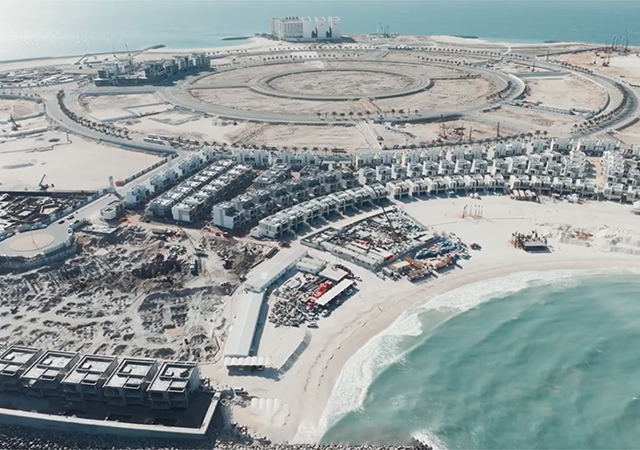

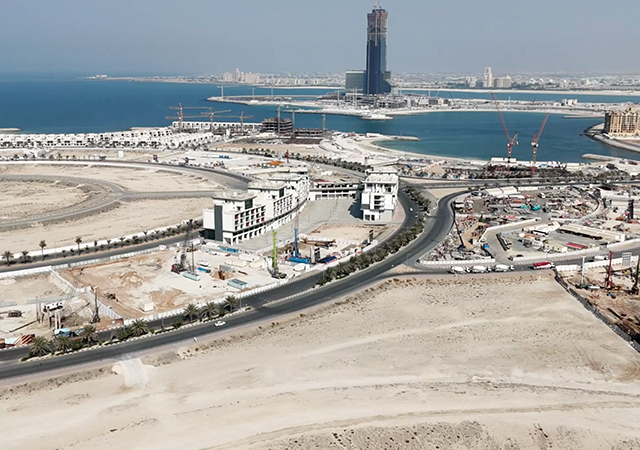
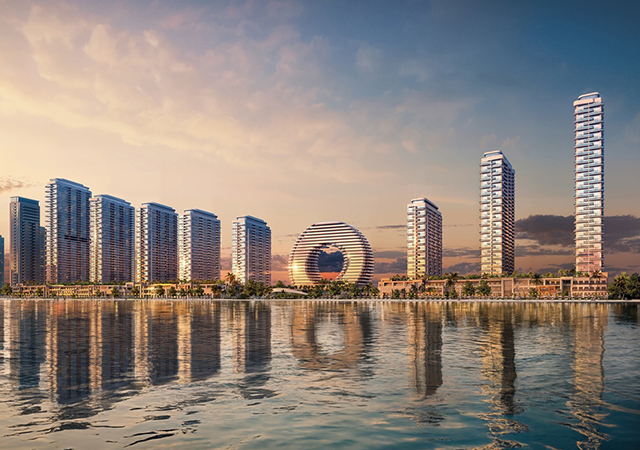
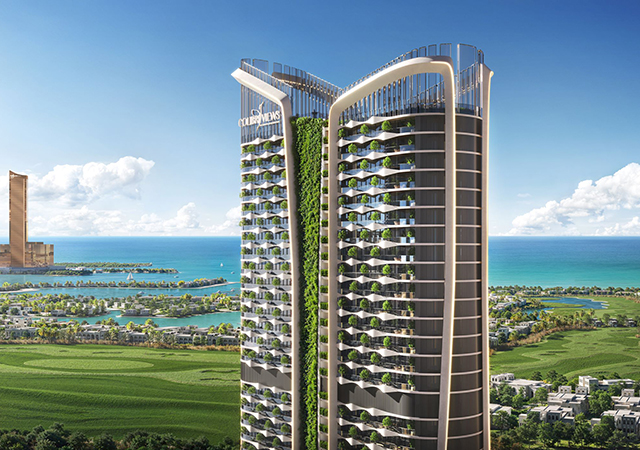
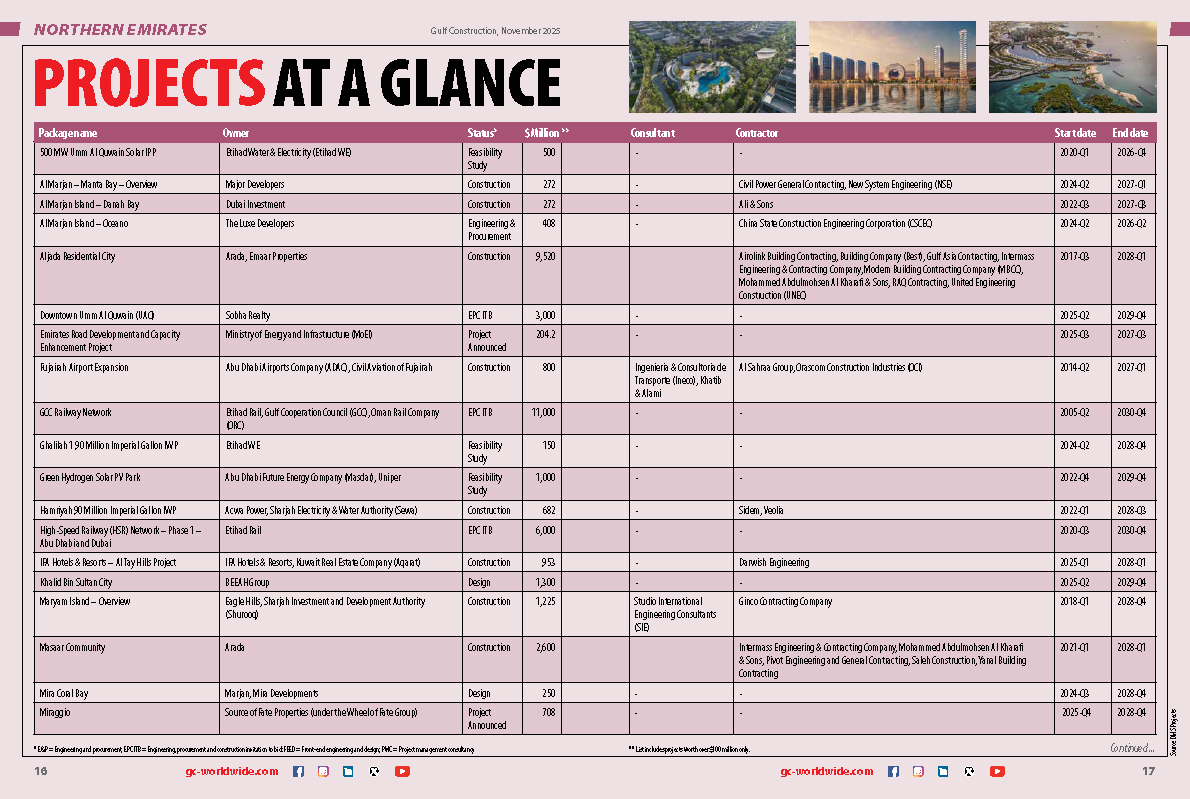
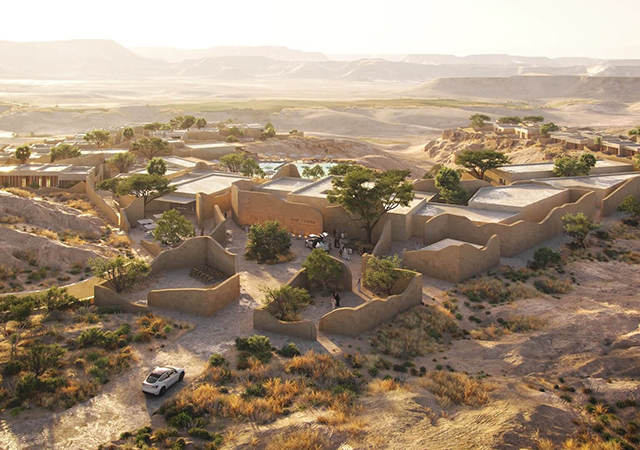

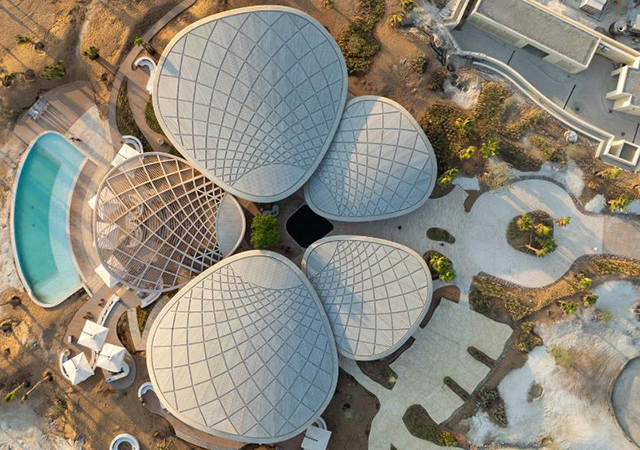

(5).jpg)
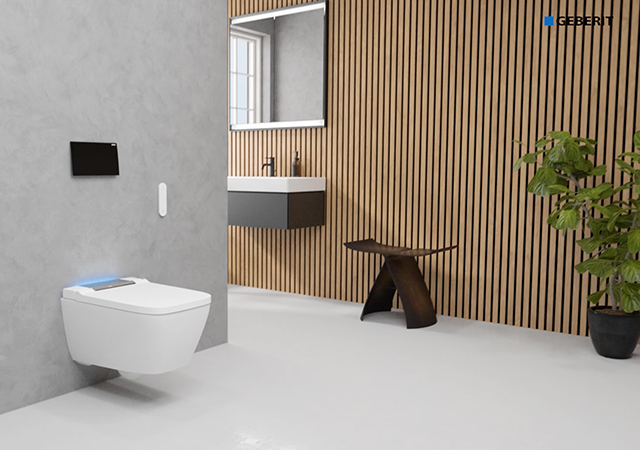
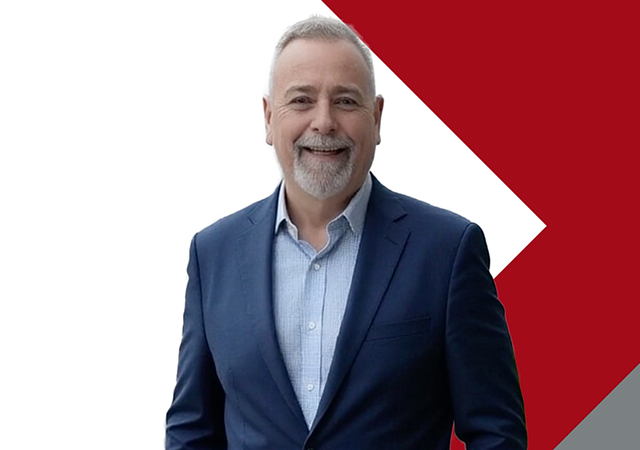
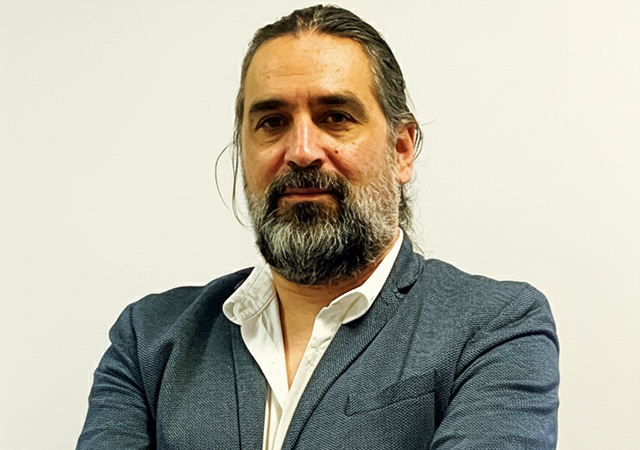
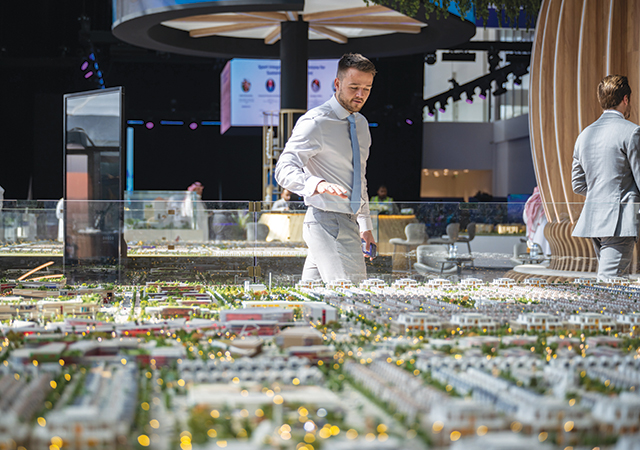
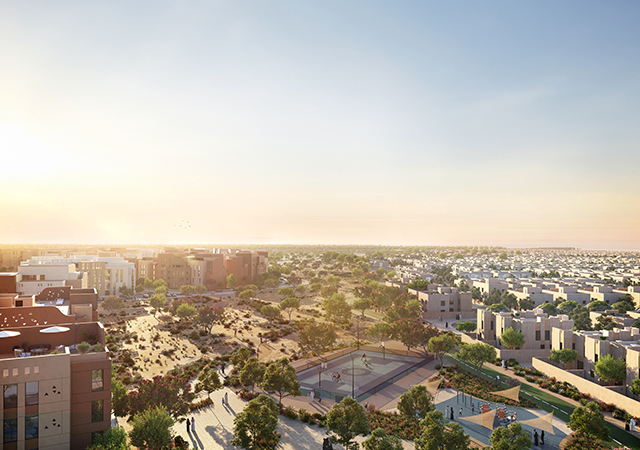
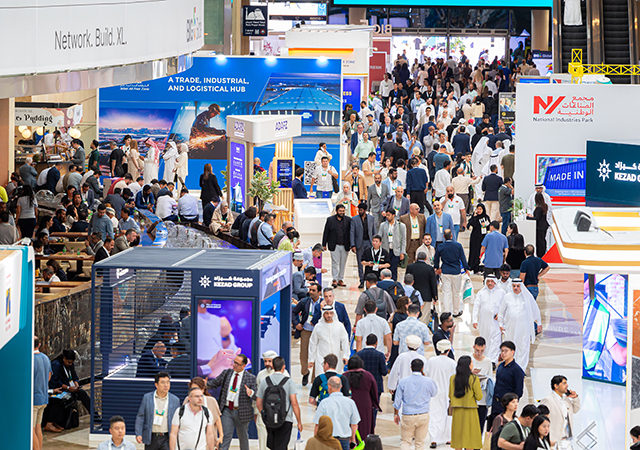

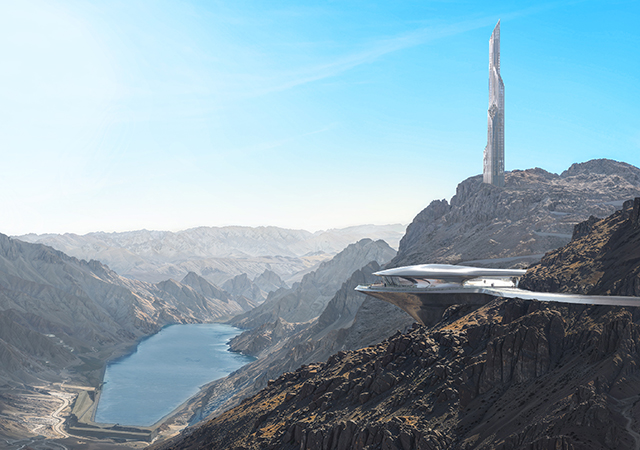
.jpg)
